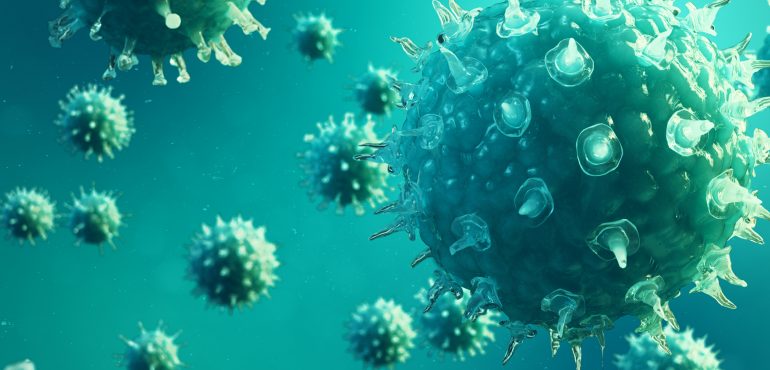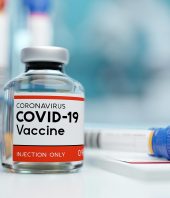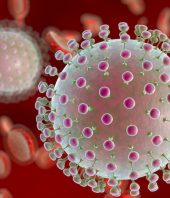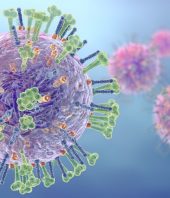A nationwide team of researchers has found an antibody that protects mice against a wide range of potentially lethal influenza viruses, advancing efforts to design of a universal vaccine that could either treat or protect people against all strains of the virus.
The study, which Scripps Research conducted jointly with Washington University School of Medicine in St. Louis and Icahn School of Medicine at Mount Sinai in New York, points to a new approach to tackle severe cases of the flu, including pandemics. The research is published in the Oct. 25 issue of Science.
Scripps Research's Ian Wilson, DPhil, one of three senior co-authors, says the antibody at the center of the study binds to a protein called neuraminidase, which is essential for the flu virus to replicate in the body.
The protein, located on the surface of the virus, enables infected host cells to release the virus so it can spread to other cells. Tamiflu, the most widely used drug for severe flu infection, works by inactivating neuraminidase. However, many forms of neuraminidase exist, depending on the flu strain, and such drugs aren't always effective -- particularly as resistance to the drugs is developing.
"There are many strains of influenza virus that circulate so every year we have to design and produce a new vaccine to match the most common strains of that year," says co-senior author Ali Ellebedy, PhD, an assistant professor of pathology and immunology at Washington University. "Now imagine if we could have one vaccine that protected against all influenza strains, including human, swine and other highly lethal avian influenza viruses. This antibody could be the key to design of a truly universal vaccine."
Ellebedy discovered the antibody -- an immune molecule that recognizes and attaches to a foreign molecule -- in blood taken from a patient hospitalized with flu at Barnes-Jewish Hospital in St. Louis in the winter of 2017.
Ellebedy was working on a study analyzing the immune response to flu infection in humans in collaboration with the Washington University Emergency Care and Research Core, which was sending him blood samples from consenting flu patients. He quickly noticed that a particular blood sample was unusual: In addition to containing antibodies against hemagglutinin, the major protein on the surface of the virus, it contained other antibodies that were clearly targeting something else.
"At the time we were just starting, and I was setting up my lab so we didn't have the tools to look at what else the antibodies could be targeting," says Ellebedy, an assistant professor of medicine and of molecular microbiology.
He sent three of the antibodies to co-senior author Florian Krammer, PhD, a microbiology professor at the Icahn School of Medicine at Mount Sinai. An expert on neuraminidase, Krammer tested the antibodies against his extensive library of neuraminidase proteins. At least one of the three antibodies blocked neuraminidase activity in all known types of neuraminidase in flu viruses, representing a variety of human and nonhuman strains.
"The breadth of the antibodies really came as a surprise to us," says Krammer. "Typically, anti-neuraminidase antibodies can be broad within a subtype, like H1N1, but an antibody with potent activity across subtypes was unheard of. At first, we did not believe our results. Especially the ability of the antibodies to cross between influenza A and influenza B viruses is just mind-boggling. It is amazing what the human immune system is capable of if presented with the right antigens."
To find out whether the antibodies could be used to treat severe cases of flu, Krammer and colleagues tested them in mice that were given a lethal dose of influenza virus. All three antibodies were effective against many strains, and one antibody, called "1G01," protected against all 12 strains tested, which included all three groups of human flu virus as well as avian and other nonhuman strains.
"All the mice survived, even if they were given the antibody 72 hours after infection," Ellebedy says. "They definitely got sick and lost weight, but we still saved them. It was remarkable. It made us think that you might be able to use this antibody in an intensive care scenario when you have someone sick with flu and it's too late to use Tamiflu."
Tamiflu must be administered within 24 hours of symptoms. A drug that could be used later would help many people diagnosed after the Tamiflu window has closed. But before the researchers could even think of designing such a drug based on the antibody, they needed to understand how it was interfering with neuraminidase.
They turned to Scripps Research's Wilson, known globally for his work as a structural biologist. Wilson is Chair of the Institute's Department of Integrative Structural and Computational Biology, and has made numerous seminal findings that have shaped efforts to develop universal vaccines for flu and other complex viruses such as HIV.
Wilson and Xueyong Zhu, PhD, a staff scientist in Wilson's lab, mapped the structures of the antibodies while they were bound to neuraminidase. They found that the antibodies each had a loop that slid inside the active site of neuraminidase like a stick between gears. The loops prevented neuraminidase from releasing new virus particles from the surface of cells, thereby breaking the cycle of viral production in host cells.
"We were surprised at how these antibodies managed to insert a single loop into the conserved active site without contacting the surrounding hypervariable regions, thereby achieving much greater breadth against the neuraminidase of different influenza viruses than we have seen before," Wilson says.
The structures showed that the antibodies provide such broad protection because they target the conserved residues in the active site of the neuraminidase protein. That site stays much the same across distantly related flu strains because even minor changes could abolish the protein's ability to do its job, thereby preventing the virus from replicating.
The researchers are working on developing new and improved treatments and vaccines for influenza based on antibody 1G01.
"Neuraminidase has been ignored as a vaccine candidate for a long time," Ellebedy says. "These antibodies tell us that it should not have been overlooked. Now that we know what a broadly protective antibody to the neuraminidase looks like, we have an alternative approach to start designing novel vaccines that induce antibodies like this. And that could be really important if we are going to figure out how to design a truly universal vaccine."
The study was supported by the grants from the National Institute of Allergy and Infectious Diseases (R01 AI117287, R21 AI139813, U01 AI141990) and the National Institutes of Health (R56 AI117675).
Source: Scripps Research Institute. (2019, October 25). By targeting flu-enabling protein, antibody may protect against wide-ranging strains: The findings could lead to a universal flu vaccine and more effective emergency treatments. ScienceDaily. Retrieved October 29, 2019 from www.sciencedaily.com/releases/2019/10/191025094024.htm






